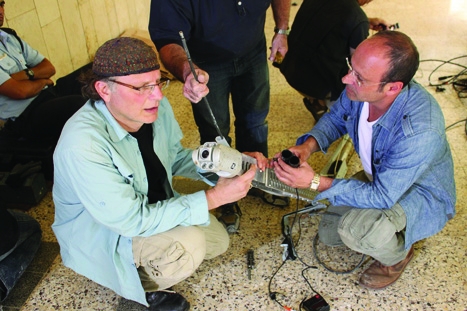Non-industrial applications of machine vision systems
Modern imaging technologies are finding use in non-industrial applications ranging from road inspection to tomb exploration.
The use of machine vision technology is well established in the industrial arena, but machine vision systems are increasingly being used in a range of more esoteric applications. Indeed, according to German industrial association VDMA, the versatility of modern machine vision systems has driven their deployment in areas as diverse as retail, traffic management and agriculture.
One company that appears particularly keen to exploit this phenomenon is one of Europe’s largest machine vision companies, Stemmer Imaging.
RVI technology was recently used to probe a 1st century burial tomb in Jerusalem
Headquartered in Germany, Stemmer Imaging has recently been trumpeting the use of its technology in a range of non-industrial settings.
In one particularly fascinating application, Stemmer engineers have been working alongside researchers at Dresden Technical University to develop road inspection systems that can carefully analyse the surface of a road while travelling at speeds of up to 130km/h.

Register now to continue reading
Thanks for visiting The Engineer. You’ve now reached your monthly limit of premium content. Register for free to unlock unlimited access to all of our premium content, as well as the latest technology news, industry opinion and special reports.
Benefits of registering
-
In-depth insights and coverage of key emerging trends
-
Unrestricted access to special reports throughout the year
-
Daily technology news delivered straight to your inbox










Water Sector Talent Exodus Could Cripple The Sector
Maybe if things are essential for the running of a country and we want to pay a fair price we should be running these utilities on a not for profit...